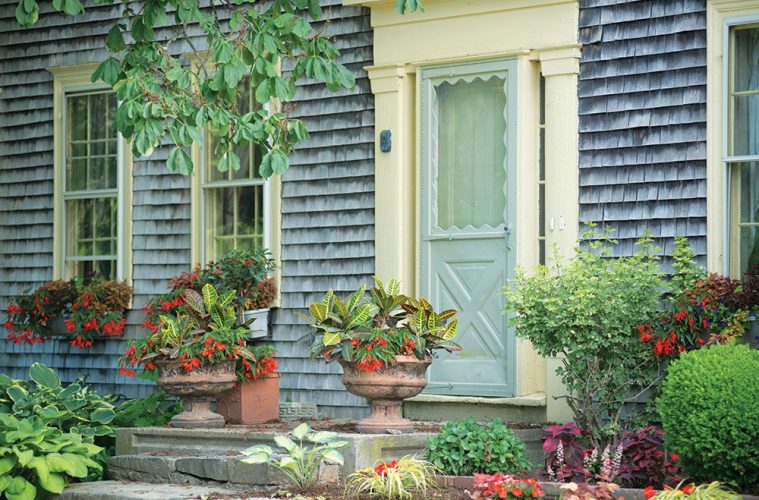When Jan Richenburg moved back to her family’s Salisbury, Massachusetts, farm, she knew that agriculture per se wasn’t her calling. Still, she had the green gene, plus the old Puritan practicality, in her DNA . Faced with barns full of water troughs, chicken feeders, enamel sieves, and buckets galore, plus all the other various leftovers from over two centuries of farming under their rafters, the Yankee in Richenburg wanted to put all her family’s excess equipment to good use. That’s when she got the idea of pairing anything that could hold potting soil with plants. She saw a colander and instantly imagined a planting display. But working with unsanctioned containers wasn’t always easy. In fact, it took some ingenuity to combine the right plants with oddball receptacles. But pretty soon, Jan Richenburg became an expert.
Nowadays, she’s moved far beyond recycling the family flotsam. She can repurpose any style of vessel from primitive to modern; Pettengill Farm now does it all. Bring a container to Pettengill Farm, purchase one of their new pots—or fall in love with one of the pre-planted antiques cherry-picked from flea markets—and Richenburg or her daughter, Liana Webb, will whip up something that turns heads.
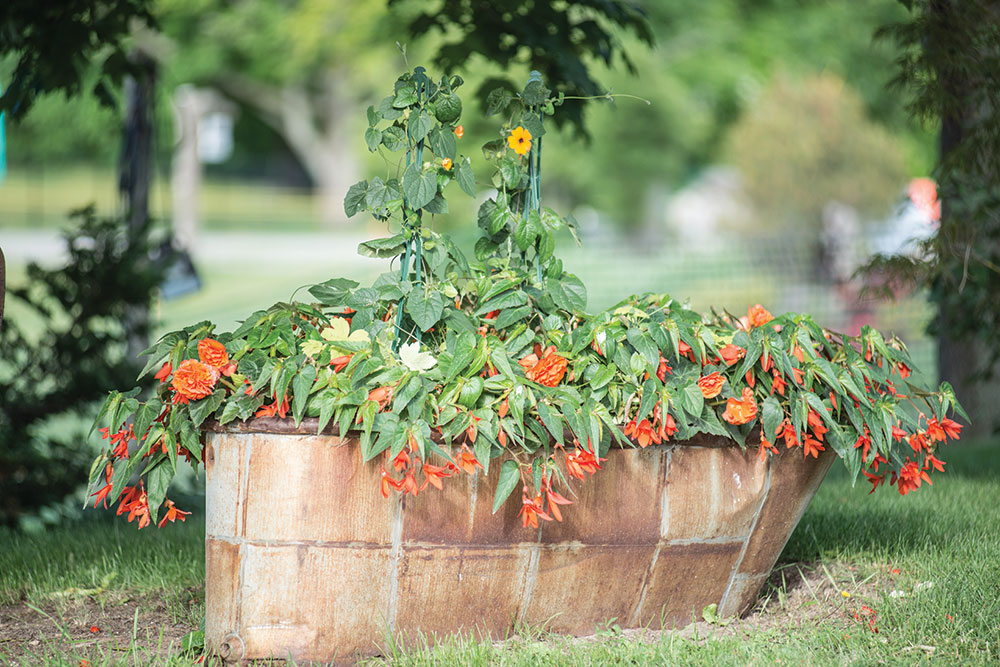
Granted, Richenburg had a head start when it comes to design, but she keeps her finger on the pulse. Her first eye-opener for design came at a Toronto plant conference in 2002, when she was introduced to some offbeat combinations. Since then, she has attended umpteen events to stay abreast of trends and gain exposure to novel plant material. Plus, she has plenty of practice. Richenburg creates 300 to 400 containers annually. If anybody knows all the tricks for pulling a container together, this veteran with a trowel does; she can tell you which container plants turn heads at 55 mph.
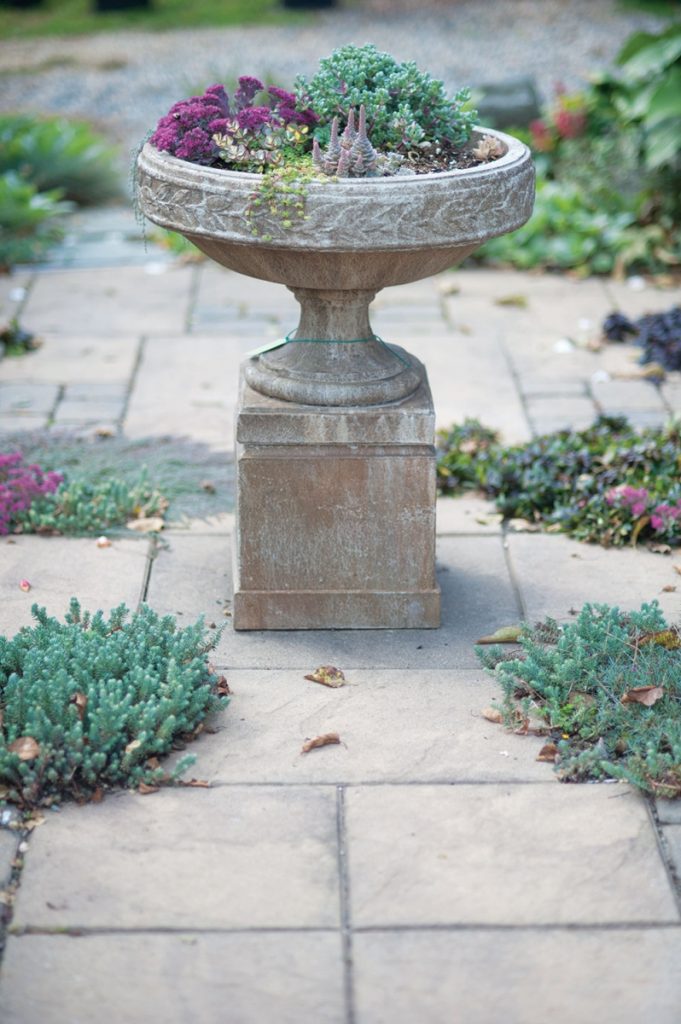
High-speed visibility is her specialty. When putting together a new plant design Richenburg first thinks about the overall presentation. Before choosing fillers, she suggests selecting a container with its intended surroundings firmly in mind. Not only should the composition be balanced by its setting (hint: one little pot is going to look really lonely from the road), but customers should also think about their house colors and any seasonal perennials that might be performing. In other words, she channels the old location, location, location equation. Maybe standing a container on a pedestal will give it more impact. Perhaps a grouping of pots would be the way to go. And you should consider embracing a theme that echoes the era or style of your home. If you’re into mid-century modern, say it with a sleek container. If the setting is a farmhouse, a galvanized metal water trough might be apropos.
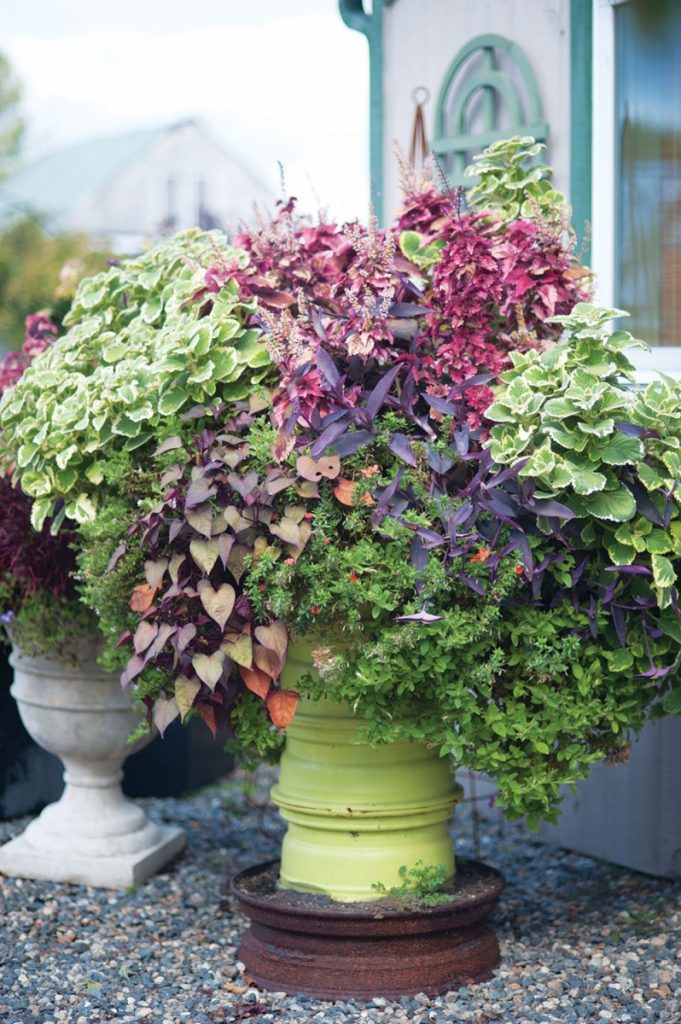
Although container choice is primarily a matter of taste, Richenburg does have preferred depth specifications. If a container is less than 7 inches deep, it is not going to work. Deeper is better, and she is a proponent of filling a container fully with potting soil rather than using “false bottom” padding such as recycled packing materials (i.e., Styrofoam noodles). She is still experimenting with self-watering containers, but she finds that shallow versions have the same issues as their standard counterparts. For the underpinnings, she has experimented with soils that contain water-retentive polymers and finds that, alas, they only extend the timing for drink serving by a day. Instead, she now takes the responsible adult approach. “Containers are a commitment,” she declares. But that being said, she does find that certain plants are better suited for a partnership than others.
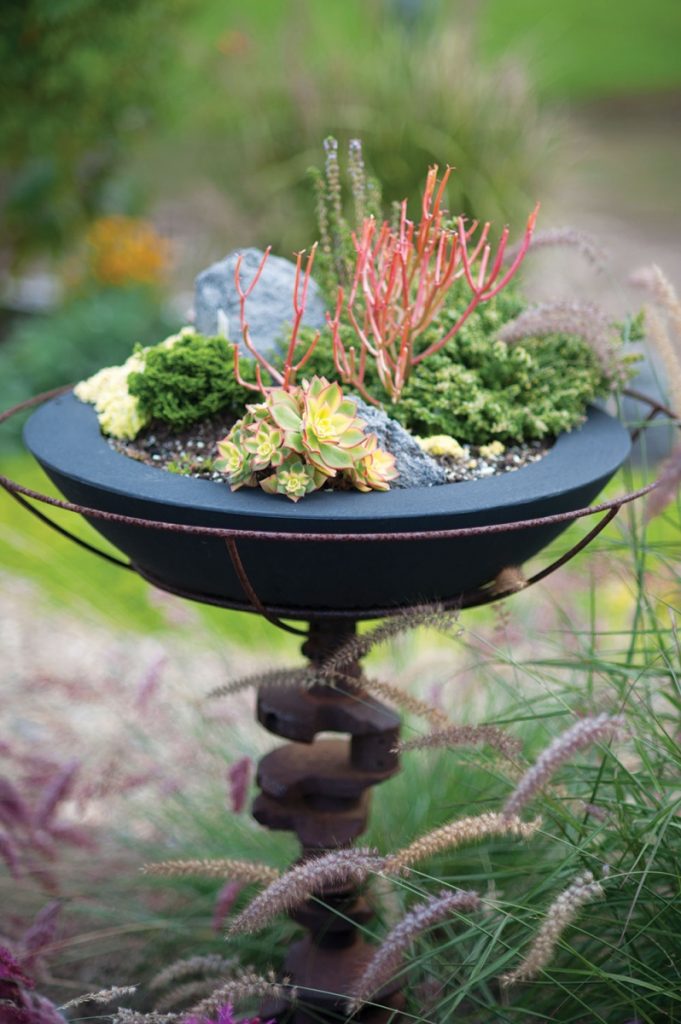
Chemistry is key, and it goes beyond simple compatibility with a container. Of course, you want attractive soil mates. According to Richenburg, visibility from a distance is where most people go wrong with plant selection. When leading workshops, she is continually urging her attendees to walk across the room to view their compositions from afar. Unlike most gardens, an outdoor container or window box is often a drive-by experience. Bold statements with large blocks of color are most apt to read well from afar. In other words, a window box might not be the best place to plant onesies. And certain colors speak out. “Reds and oranges are bold from a distance. But purples and blues usually don’t speak loud enough to be seen from afar,” she instructs. Keep your masterpiece simple. “You want a riot of color, not chaos,” she warns.
When it comes to plant matchmaking, Richenburg is in her wheelhouse. Again, she urges gardeners to factor their location into their selections. Will your container be situated primarily in sun or shade? Choose your palette accordingly. Many of Pettengill Farm’s clients live on the ocean or in near proximity to it. Strong winds can be an issue. Richenburg has found that Tidal Wave petunias earned their name partly for their vibrant colors, but also because they perform where wind gusts are strong. “They do need to be watered often,” she cautions. She is also fond of ornamental grasses, osteospermums, and portulacas for seaside duty. Succulents such as agaves are perfect for oceanside displays.
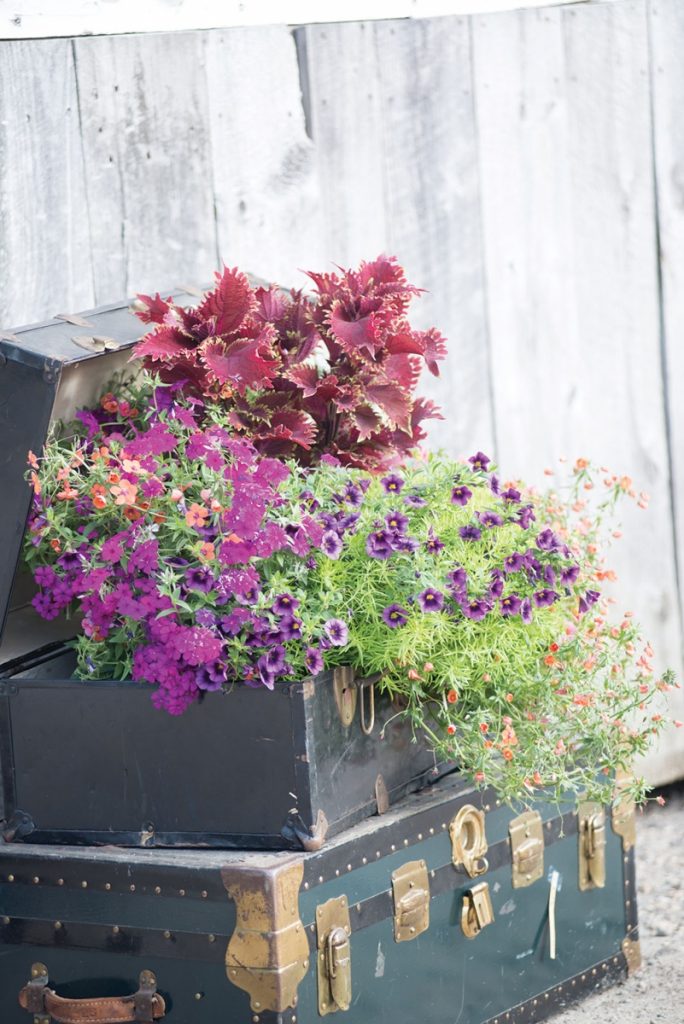
Although flowers are typically the target for containers, Richenburg prefers to work with a ratio between blooms and foliage, balancing her bloomers with a backdrop of foliage plants to show off the goodies. That said, the foliage plants that she harnesses generally have vibrant colors that keep the dialogue strong even when flowering plants are in a lull. For that purpose, she is fond of coleus, plectranthus, alternanthera, dichondra, lotus, and fuchsias. For flowers that pop in unison harmony with their leafier bedfellows, she veers toward tuberous begonias or upright blooming fuchsias in partial shade or calibrachoa, angelonias, lantanas, and flowering salvias for sunnier locations.
A great container can be used throughout the entire growing season, lingering long into autumn. Jan Richenburg is a major proponent of adding plants that give containers legs as the days shorten. For that purpose, she avoids the clichéd chrysanthemums and goes for more unusual suspects such as ornamental peppers, hardy herbs, marigolds, celosias, euphorbias, and ornamental grasses, as well as the many novel flowering kales newly on the market. With a little finesse and savvy plant selection, you will turn heads throughout most of the year. After Labor Day has come and gone, your containers can still flower all year long.

